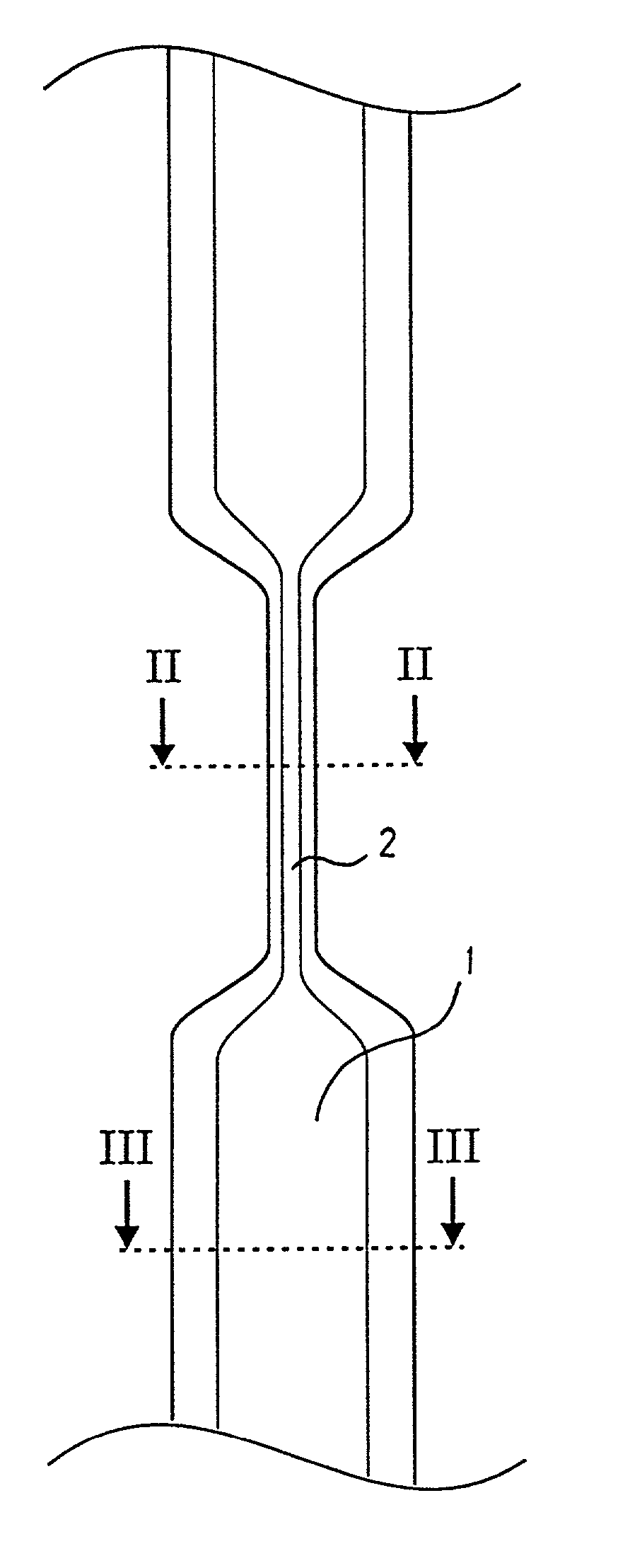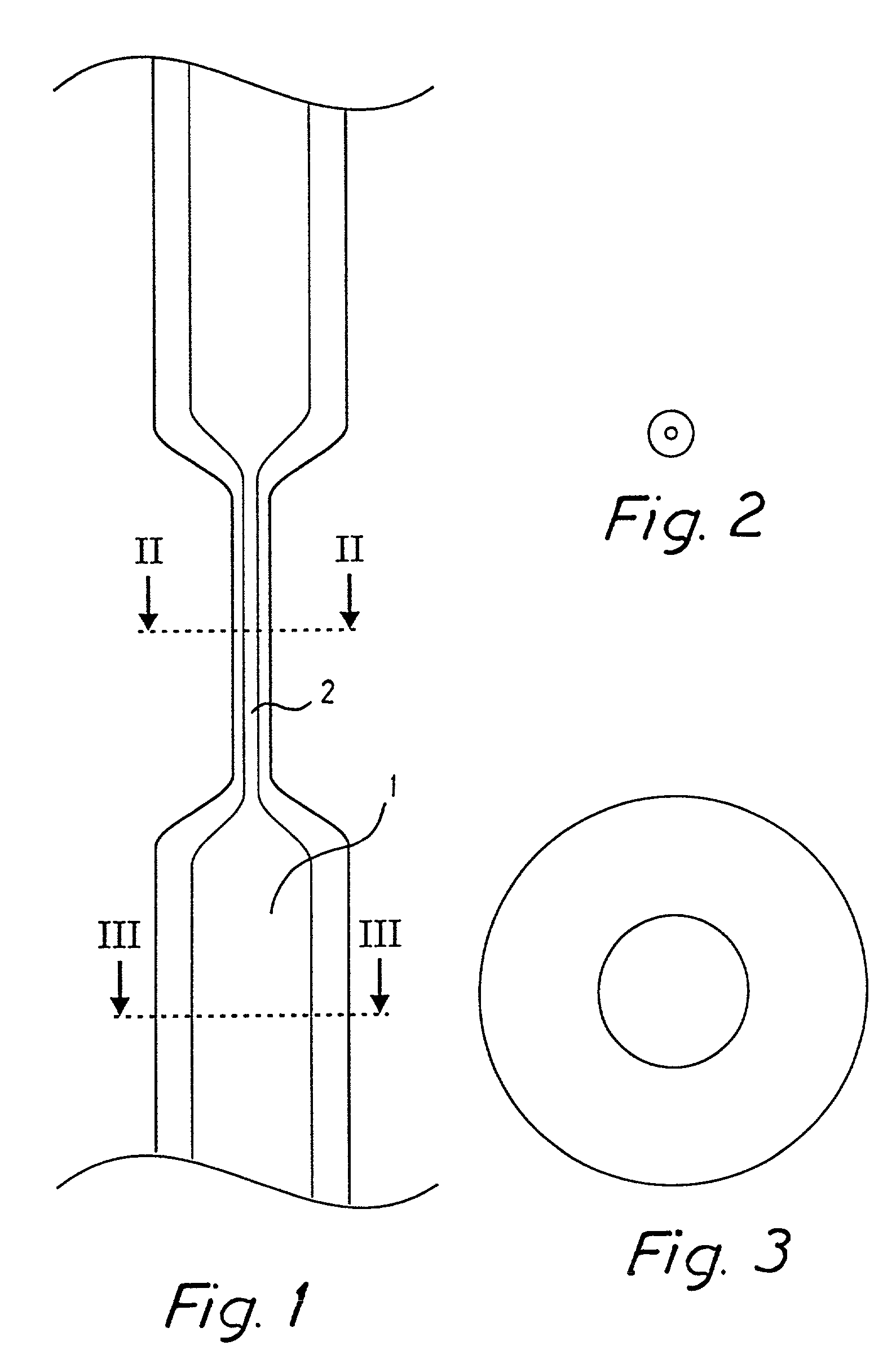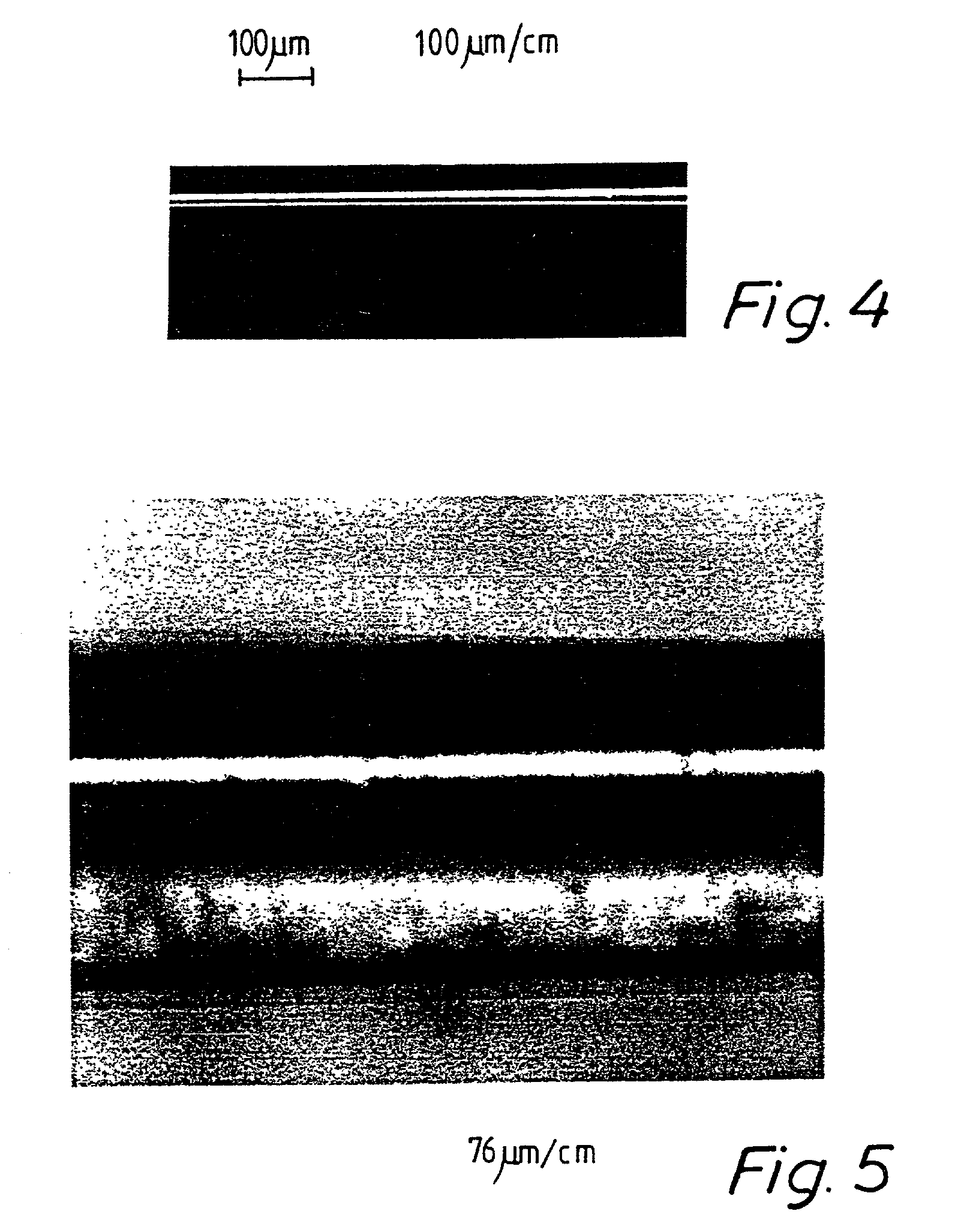Method, apparatus and flow cell for high sensitivity detection of fluorescent molecules
a fluorescent molecule and high-sensitivity detection technology, applied in the field of optical methods for high-sensitivity detection of fluorescent molecules, can solve the problems of difficult detection of adequately, inability to amplification the molecules to be detected, and limited diffusion of known methods
- Summary
- Abstract
- Description
- Claims
- Application Information
AI Technical Summary
Benefits of technology
Problems solved by technology
Method used
Image
Examples
example 1
Detection of Individual 30-nm Fluorescent Beads in a Pulled Capillary By Scanning Confocal Fluorescence Microscope (SCFM)
[0089] The optical set-up used in this example is the preferred embodiment illustrated in 14, which has been described above. The sample analysed in different ways in this example was a disperse solution of latex beads with a diameter of approximately 30 nm, containing an equivalent of approximately 100 fluorescein molecules (Molecular Probes, Eugene, Oreg., U.S.A). Three experiments were made, wherein detection was performed in three different ways; in a regular capillary, in a pulled capillary with a constricted region according to the invention and in a drop on a coverslip.
experiment 1
[0090] The result of detection of the fluorescent beads in a regular 360 .mu.m-outer-diameter 150 .mu.m-inner-diameter fused silica capillary with a 105 .mu.m wall thickness is shown in FIG. 16. The capillary used in this first experiment did not comprise any constricted regions. The capillary wall therefore dramatically distorts the excitation laser beam, which in turn results in significant distortions of the laser focus. Since the capillary wall has a cylindrical symmetry, it acts as a cylindrical lens that strongly focuses the laser beam along one dimension. This cylindrical distortion is the main cause of the observed spherical aberration in this system. Spherical aberration is detrimental to the performance of a confocal microscope. It is clear from the figure that it is not possible to detect any fluorescence signal from the beads over the background noise in this configuration.
experiment 2
[0091] The result from detection according to the invention is shown in FIG. 17. The detection of the fluorescent beads was performed during a 3 second detection period in a capillary similar to the one used in the first experiment, except for the fact that it comprised a constricted region with an inner diameter of about 8 .mu.m, an outer diameter of about 18 .mu.m, and thus a wall thickness of about 5 .mu.m. This 20-times reduction of wall thickness is crucial to maintaining a good quality laser focus for detection with SCFM. Although the presence of the capillary still introduces spherical aberration, the extent of this aberration is dramatically reduced. At the limit where the dimensions of the pulled capillary is comparable to that of the laser focus (about 1 or 2 .mu.m), spherical aberration introduced by the capillary would become negligible. The signal collected from this constricted region of the capillary demonstrates that individual beads can be detected with good signal...
PUM
 Login to View More
Login to View More Abstract
Description
Claims
Application Information
 Login to View More
Login to View More - R&D
- Intellectual Property
- Life Sciences
- Materials
- Tech Scout
- Unparalleled Data Quality
- Higher Quality Content
- 60% Fewer Hallucinations
Browse by: Latest US Patents, China's latest patents, Technical Efficacy Thesaurus, Application Domain, Technology Topic, Popular Technical Reports.
© 2025 PatSnap. All rights reserved.Legal|Privacy policy|Modern Slavery Act Transparency Statement|Sitemap|About US| Contact US: help@patsnap.com



